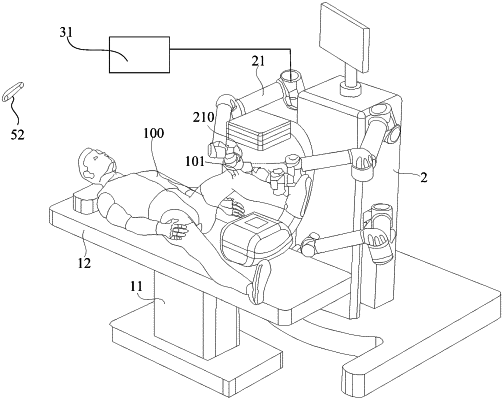| CPC A61B 34/20 (2016.02) [A61B 34/30 (2016.02); A61G 13/02 (2013.01); A61B 2034/2046 (2016.02)] | 17 Claims |

|
1. A surgical operation monitoring method, applied to a surgical operation monitoring system, wherein the surgical operation monitoring system comprises a surgical support device and a surgical robot, the surgical support device comprises a stand, a support body mounted on the stand and a driver configured to drive the support body to move relative to the stand, the support body is configured to support a surgical object, and the surgical robot comprises mechanical arms with actuating ends; and
the surgical operation monitoring method comprises:
acquiring a position of a surgical site of the surgical object at a first moment;
under the condition that the position of the surgical site at the first moment exceeds a moving range of the actuating end of the mechanical arm, determining an allowable moving range of the surgical site at the first moment, which is a range within which the driver is capable of driving the support body to move so that the support body drives the surgical site to move at the first moment; and
under the condition that the allowable moving range of the surgical site at the first moment and the moving range of the actuating end of the mechanical arm have an overlapping range, controlling the driver to drive the support body to move so that the support body drives the surgical site to move into the overlapping range;
controlling the actuating end of the mechanical arm to perform operation according to a first surgical path, under the condition that the position of the surgical site at the first moment does not exceed the moving range of the actuating end of the mechanical arm and the surgical site does not deviate from the actuating end of the mechanical arm at the first moment; and
correcting the first surgical path according to a position corresponding to the position of the surgical site at the first moment to obtain a second surgical path, under the condition that the position of the surgical site at the first moment does not exceed the moving range of the actuating end of the mechanical arm and the surgical site deviates from the actuating end of the mechanical arm at the first moment, and controlling the actuating end of the mechanical arm to perform operation according to the second surgical path after the actuating end of the mechanical arm moves to the position corresponding to the position of the surgical site at the first moment.
|